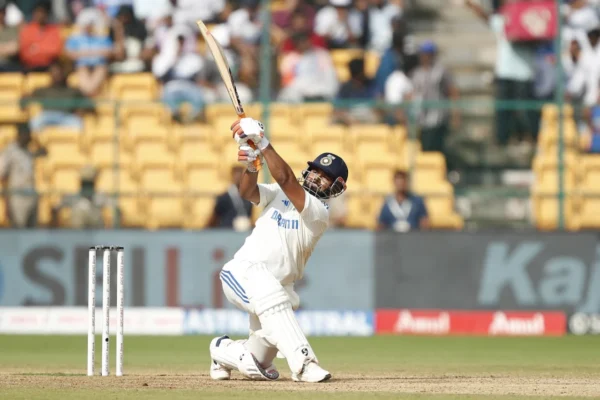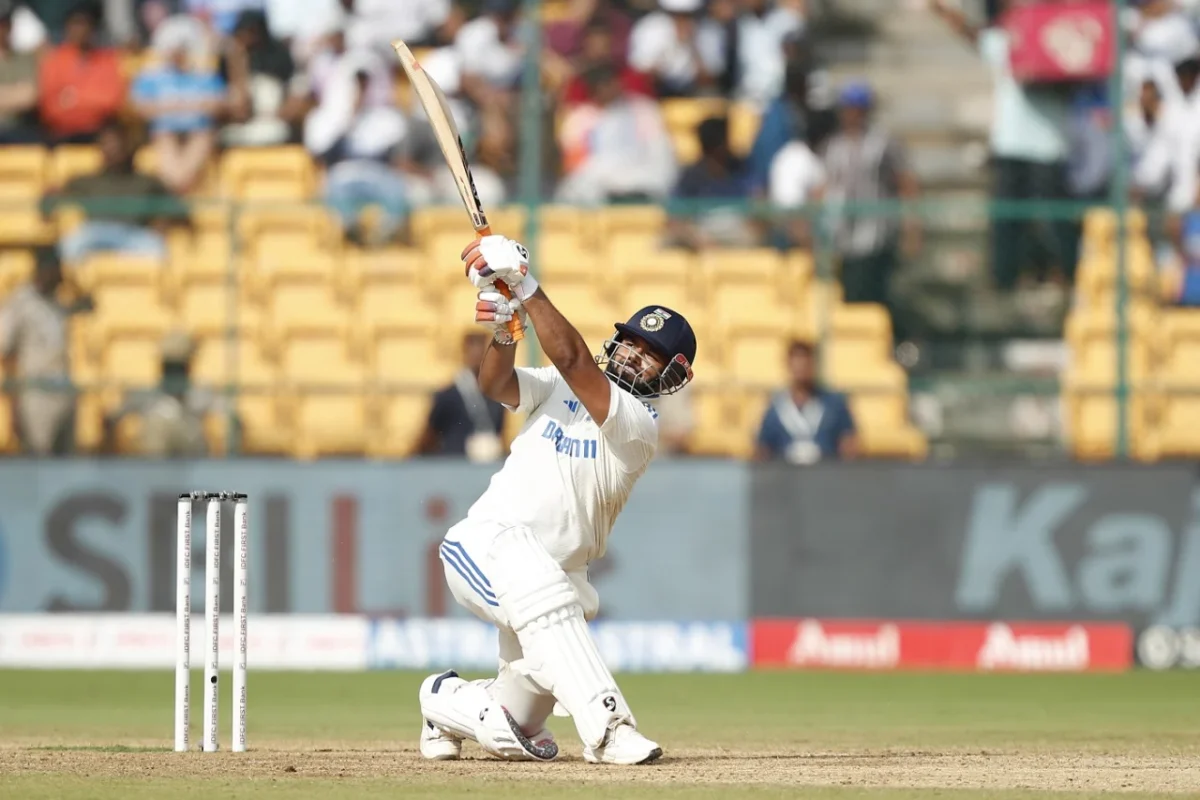
India lost their last 6 wickets for just 37 runs

Rishabh Pant’s 107m six off Tim Southee, which sailed out of the Chinnaswamy Stadium, might well have shifted the game’s momentum. India went from being in control to barely holding on in the Test match, a rarity at home.
India was bowled out for just 46 runs in their first innings, and New Zealand responded with a massive 402. In the second innings, India came out attacking, scoring 400 runs in just around 80 overs at a run rate of 5 per over, with skipper Rohit, Kohli, Sarfaraz and Pant amongst runs.
Also Read: Multiple IPL franchises set to eye on new overseas fast bowling sensation
Since 80 overs had passed, New Zealand took the new ball. However, the new ball wasn’t doing much in terms of swing and seam as confirmed by Jarrod Kimber‘s analysis, and India looked comfortable playing it. Everything was going smoothly until the 86th over when Rishabh Pant slog-swept Tim Southee for a huge six that flew out of the Chinnaswamy Stadium.
But after Pant’s six, which went out of the ground, a replacement ball was brought in and at that time India were 425/4. Suddenly, this new ball started swinging and seaming a lot more, making things much harder for the Indian batters.
Pant, who was in the nervous nineties and dealing with a knee injury, was desperate to get his century. Just before his dismissal, he had pushed for a risky two to get closer to the milestone. But on the very next ball, he got out. William O’Rourke bowled a tricky delivery from around the wicket, short of a length, and it jagged off the seam. Pant got some bat on it, but the ball bounced back onto his stumps.
At that point, India had been ahead in the game for the first time, and it felt like they might actually pull off a remarkable comeback. But after Pant’s six, things fell apart. India lost 6 wickets for just 37 runs in 13 overs and could only set New Zealand a target of 107.
Also Read: ‘Naseem better than Bumrah’: Young Pakistan pacer sparks controversy
But credit should also go to the New Zealand seamers, who bowled with perfect line and length, troubling the batters. Henry and O’Rourke picked up three wickets each, while Southee took one, following a strong start by spinners Ajaz Patel and Glenn Phillips, who claimed the first three wickets of the innings.
Ultimately India lost the Test match as New Zealand chased down the target and won by 8 wickets.
A similar thing happened at the Chinnaswamy Stadium earlier this year in the IPL 2024. MS Dhoni and Ravindra Jadeja were hitting RCB’s bowlers hard, helped by a wet ball that made it difficult for them to bowl slower deliveries. CSK needed 63 runs from 24 balls to reach the playoffs, which was quite a challenge. But then the dew came in, and suddenly Dhoni and Jadeja were unstoppable. They brought the target down to just 17 runs off the last 6 balls.
Then Dhoni smashed a short ball out of the stadium, and the ball had to be replaced. CSK looked set to qualify, with just 11 runs seeming like a formality. However, on the very next delivery with the change of ball, Dhoni was dismissed by the first slower ball that was bowled well, followed by another good one. Suddenly, the 11 runs went from certain to unreachable. The key difference was that Yash Dayal had a dry ball and CSK lost that match.
From these situations alone, it can be said that sometimes when the team in control gets a damaged ball replaced, the new ball behaves differently, making it easier for the batters to score. Other times, it works in favour of the bowlers as it helps them regain control when runs are flowing.
For more updates, follow CricXtasy on Facebook, Instagram, Twitter, Telegram, and YouTube.